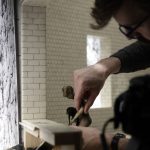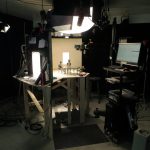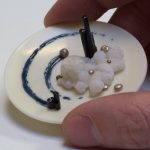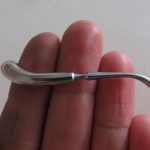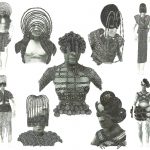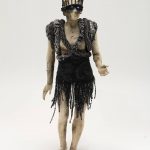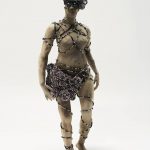Stark, haunting, explosive. All words that could be used to describe Jasper Kuipers’ new movie, Finity Calling. The film’s own description reads, “In search of his boundaries, a boy violates the strict social rules inside the room. When the fragile equilibrium in the group is broken, the results are explosive.” The look and feel of this piece are equally ominous and somewhat impalpable.
When we asked Kuipers about his process in making the highly stylized film, he told us, “I had the luck to be able to work with John Craney at Pedri animation who is an absolute legend when it comes to making stop-motion puppets. I did the design work for the film myself, but his expertise was vital for getting the puppets to be able to do the very controlled and nuanced acting.
“We spent some time figuring out how to incorporate LED eyes into the puppets that would have an even, overexposed surface but that didn’t actually shine light outwards. We ended up placing two super bright LED’s behind small opaque lenses inside the head cores.”
He also filled us in on some of the more painstaking work in the film’s creation, like embroidering and hand sewing all the tiny beads onto the materials and constructing a 3.5 inch bird puppet covered with hundreds of real tiny bird feathers. “By die-cutting small chicken feathers to an even smaller size you end up with an end result that looks very much like the real thing.”
As usual with such elevated stop motion work, the time it took to complete each phase of the film was monumental. All in all the entire film took several years to make and, “All the animation in the film was shot in my (small) studio where I locked myself up for about 11 months in total,” Kuipers said. “So literally every single frame of the film went through my hands!”
Throughout that length of time, there was creative problem solving at every turn. “Together with a mime actor I shot a bunch of reference footage that I used while animating,” Kuipers told us. “I basically get two stages in which to direct the acting. I tried to do all the effects in-camera as much as possible, which sometimes lead to interesting solutions. Like animating objects from a distance with strong magnets, animating slushing liquids with a slow settling gel and even printing 650 separate frames of animation on diffusion light filters to make the birds raining from the sky.”
Kuipers also told us about the challenge of the high volume of close-ups in the film without the budget to work in different scales. “There were shots completely animated with dentist tools, tweezers and even needles! The movement of the characters was meant to be very restrained which made it even harder in the close-ups.”
Through it all we were glad to hear that the software was a huge help. “I don’t know how I would have pulled this off without using Dragonframe. At times I had to rely so much on the live view and the function to zoom in on certain areas. I am a big fan of using x-sheets and used those on every single shot in the film. It is great to have these tools incorporated into the software to make life a little easier.”
The film premieres internationally today in Stuttgart and you can see some behind the scenes photos here:

